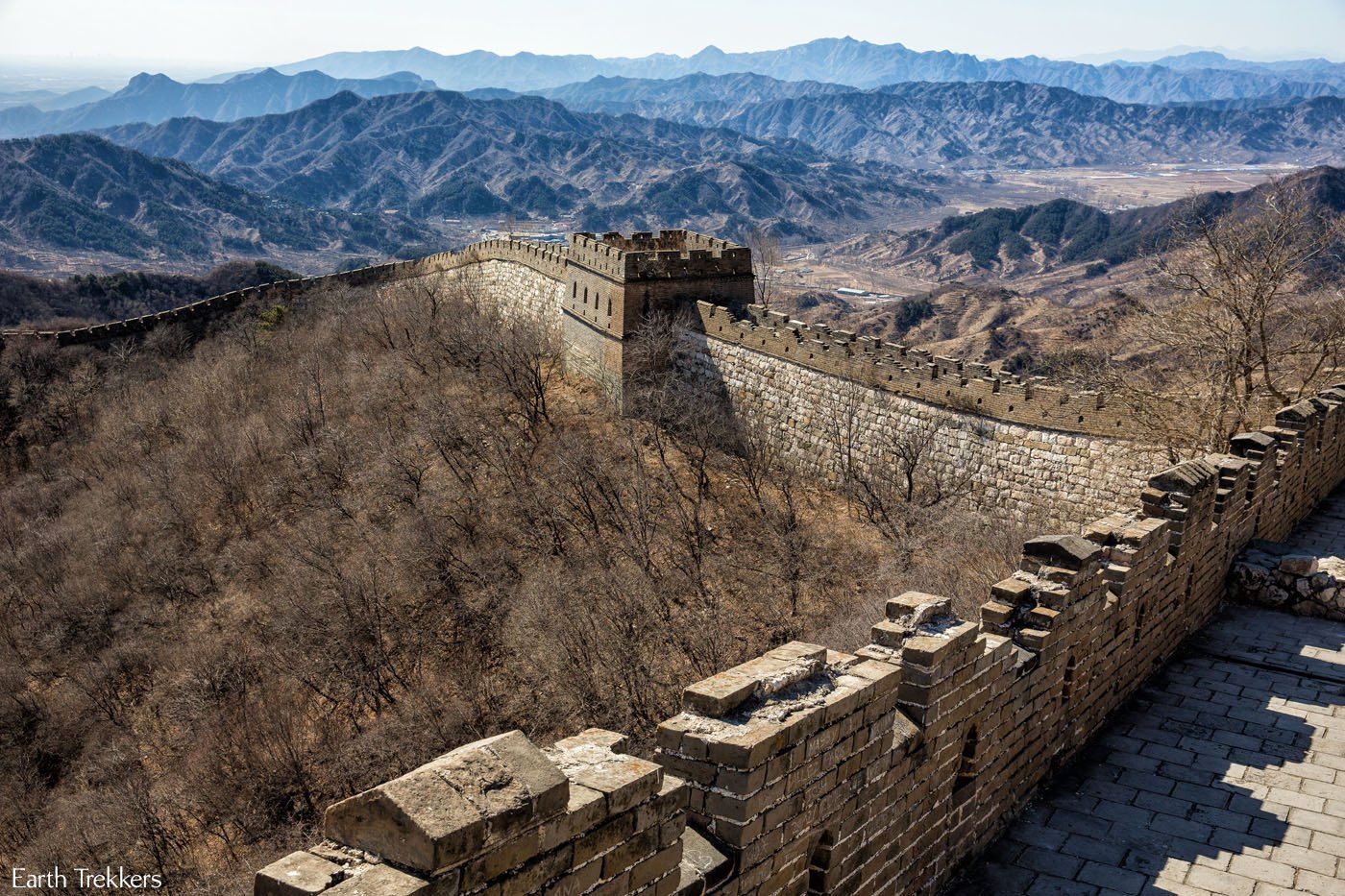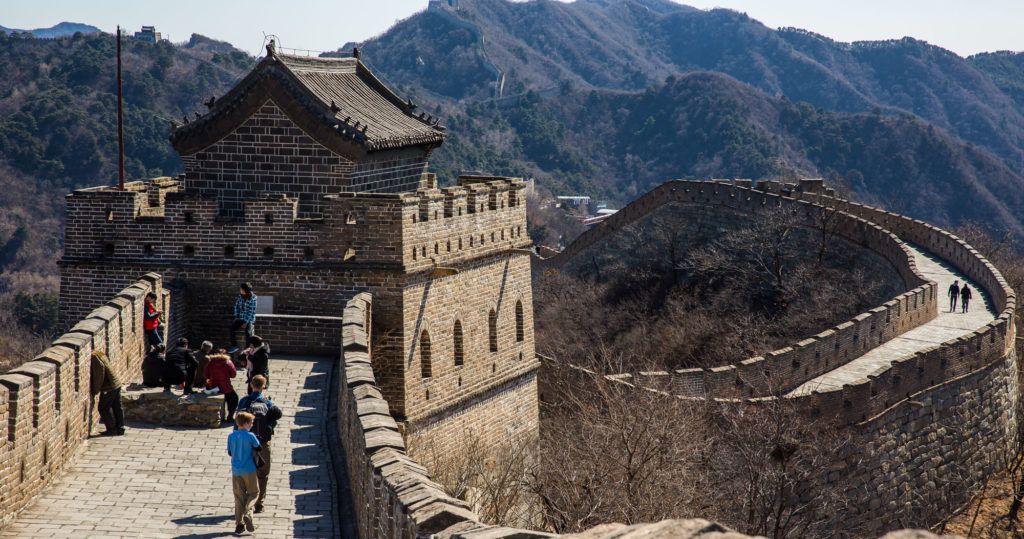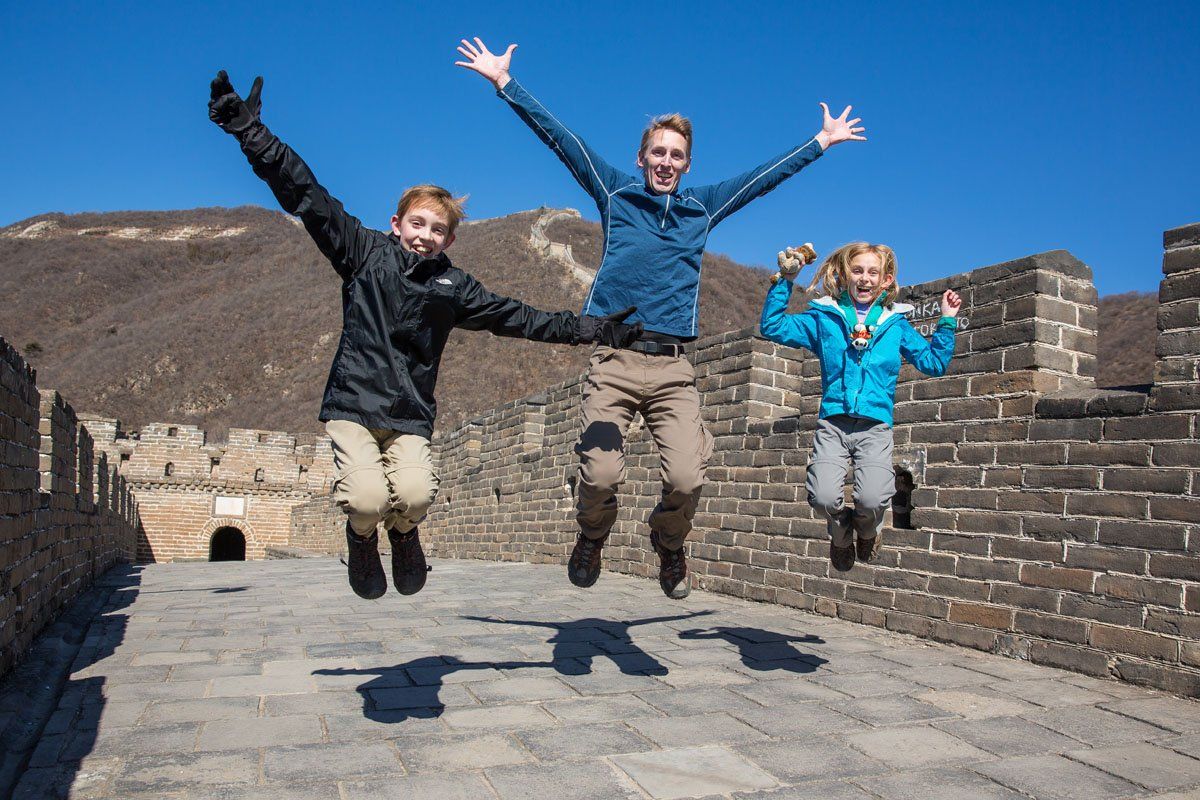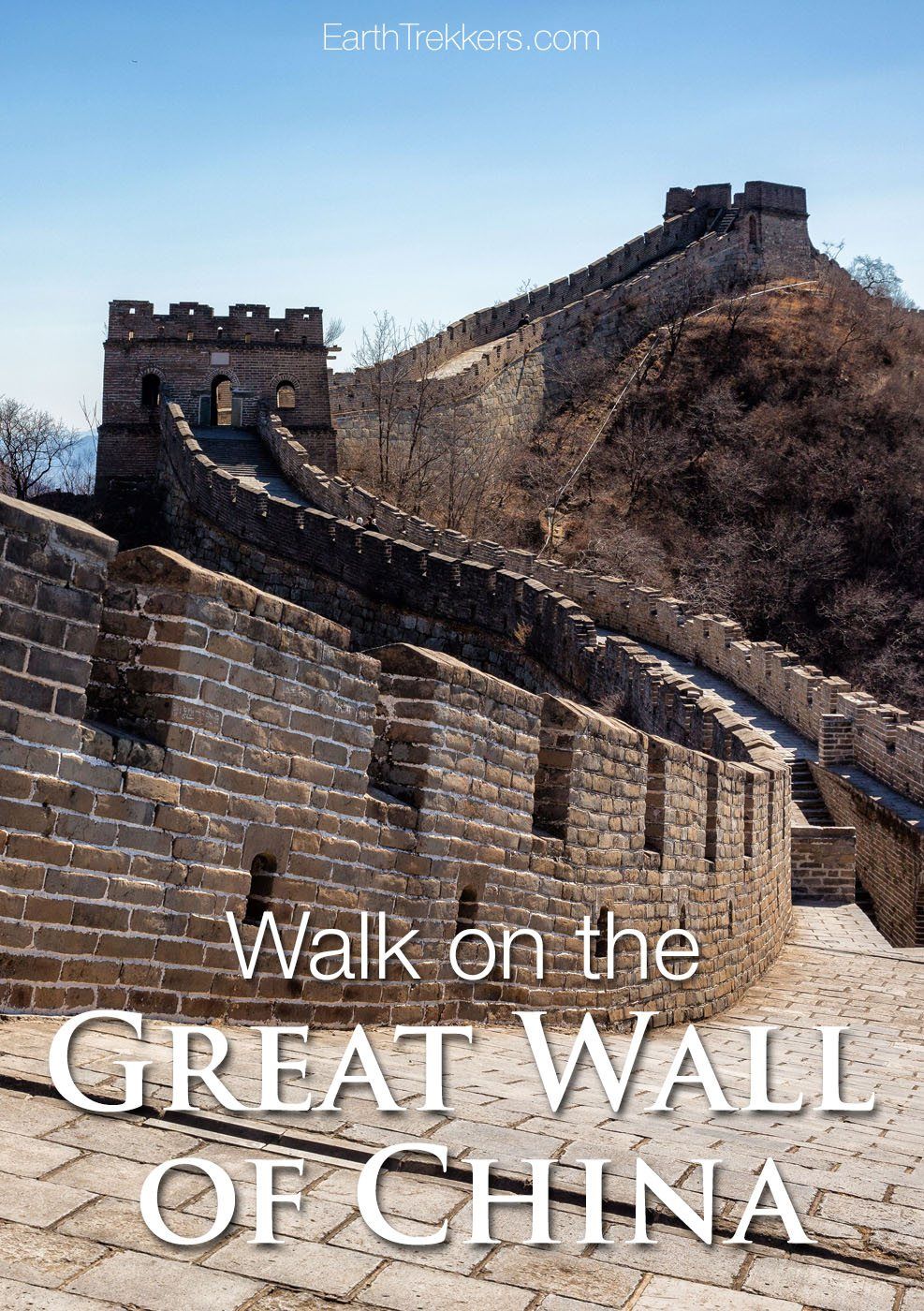On March 2015 my family and I visited the Great Wall of China. We had a week to spend in Beijing and the main thing we wanted to do here was to walk on the Great Wall. (This post was written by Kara).
We visited the Great Wall of China twice. The first time we went with my grandmothers, Kathy Younkin and Valerie Richardson, to the section called Mutianyu. This part of the Great Wall is in good condition, easy to walk on, and has a toboggan at the end. The second time I went only with my parents and Tyler. We walked on the older section called Jiankou and this was so much fun. While walking on the wall we wondered about the history and why the Great Wall was here. This leads me to this report about history of the Great Wall of China.
The Great Wall of China
History of the Great Wall of China
The Great Wall of China is ancient. It was first built around 200 BC in small sections by King Zhen Qin. These walls were made of hard earth and stone. Over many years they fell apart and eroded away. Not many of these walls still remain today. These walls were built to protect small Chinese tribes from invasion by neighbors.
The walls were rebuilt several more times but most of the wall that still survives today was built by the Ming Dynasty. These walls were built in the 14th century. These walls were built along the northern border of China to protect China from Mongol invaders. The Ming walls measure 8850 km (5,500 miles), going from Shanhaiguan in the east to the Lop Lake in the west. These walls were stronger than previous walls since they were built with stone and brick. There were also 25,000 watchtowers constructed along the wall. The strongest walls were built closest to the capital city of Beijing.
These stronger walls were built by hundreds of thousands of slaves. Enemies of the Emperor were forced to build the walls, which was very difficult and dangerous work. It is said that for every block laid down one worker lost their life. Towns had to be built along the walls for the workers to live and extra crops needed to be grown to feed the laborers. A lot of energy and human life went into building this wall.
The wall was breached by Manchu forces in 1644. These forces took over Beijing, ending the reign of the Ming Dynasty and started the next long period of reign by the Qing Dynasty.
When I first saw the Great Wall it did not look how I expected it to. I did not expect the Great Wall to sit so high on the mountaintops. It looked very cool. Looking out at the landscape around the Great Wall and towards Beijing was awesome and one of my favorite things about visiting here. In pictures, the Great Wall always looks like it is in good condition. To go to an unrestored section and see trees growing out of the top of the wall was fascinating. It made hiking very fun, especially with loose, slippery rocks and drop offs because of the missing railings.

You cannot go to China without visiting the Great Wall. What an amazing landmark and I am so glad that I got to see it. And for anyone who likes a little more excitement, the slideway to get down from the Great Wall is the perfect end to an amazing day.
Photos of the Mutianyu Section of the Great Wall










More Information for Your Trip to China
CHINA: Learn how to visit Zhangjiajie National Forest Park, the best things to do in Yangshuo, what it is like to hike the Great Wall of China, things to do in Beijing, and get essential travel tips for China.
ZHANGJIAJIE: Take a photo tour of Zhangjiajie National Forest Park, learn how to visit Tianmen Mountain, and explore the market in Zhangjiajie.
TRAVEL PHOTOGRAPHY: For more information about the camera gear we carry, check out our Travel Photography Gear Guide. And tips and tricks for taking great photos in our article How to Take Better Photos while Traveling.
TRAVEL INSPIRATION: Here are 30 great travel books and a list of the best travel movies to feed your wanderlust.
Read all of our articles about China in our China Travel Guide.
All rights reserved © Earth Trekkers. Republishing this article and/or any of its contents (text, photography, etc.), in whole or in part, is strictly prohibited.









Comments 4